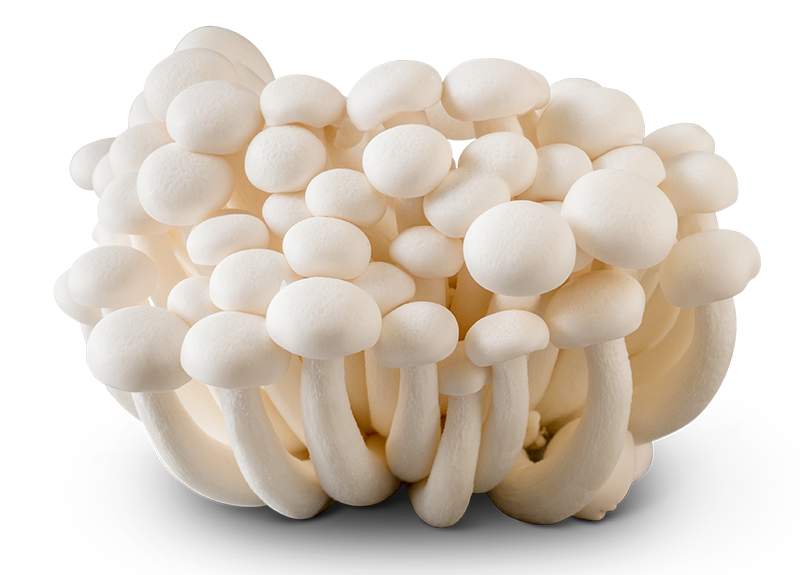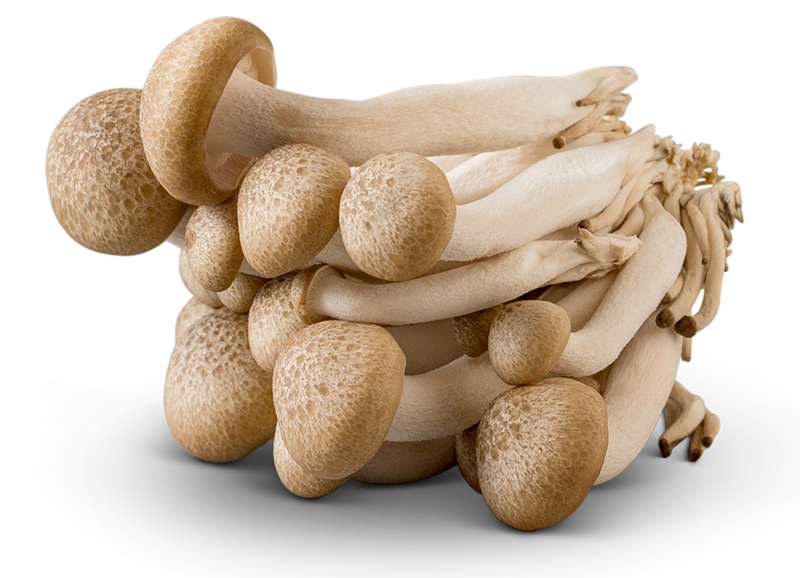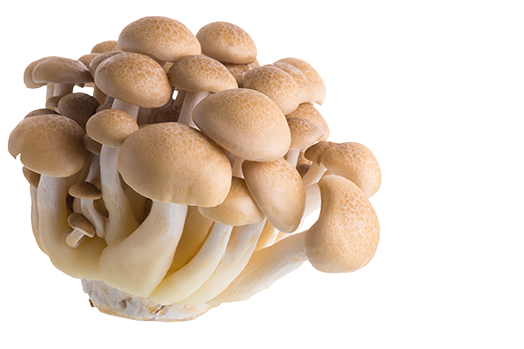
Beech Mushrooms
These unique-looking mushrooms add such a pleasant surprise to the plate. Beech mushrooms (Hypsizygus tessellatus) grow in tight bunches, 3-4 inches wide and are identified by their short stems and small button caps. They are often classified into white and brown, depending on the color of the caps. The brown beech variety have light tan caps, while white beech mushrooms are pure ivory.
Beech mushrooms are considered native to Eastern Asia but are farm cultivated in North America and are known by several alternative names. These include Hon Shimeji, Alba Beech, Alba Clamshell, White Clamshell, Omo-motashi in Japanese, and Chiodini or Pioppini in Italian.
With a flavor some call “buttery” or “nutty,” beech mushrooms give off an almond aroma, and the texture leans toward the crunchy side when cooked. When eaten raw, they possess a sharply bitter flavor. This popular mushroom earned its name from growing at the base of beech trees and other hardwoods. Today, our mushroom farms grow beech mushrooms in hardwood sawdust, grain, and organic agricultural materials to replicate their natural environment.
When storing beech mushrooms, refrigerate them in their original packaging. If purchased individually or in non-breathable packaging, place them in a brown paper bag and refrigerate. Beech mushrooms usually keep up to 10 days when stored properly in the refrigerator.

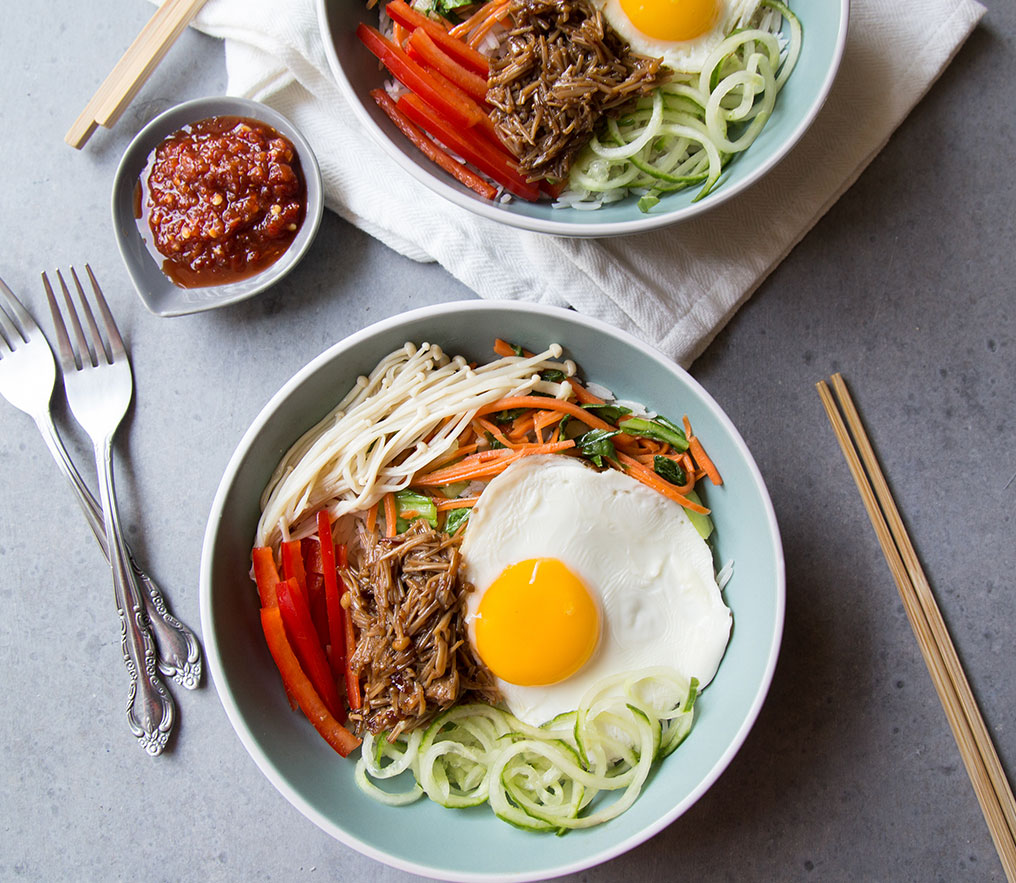
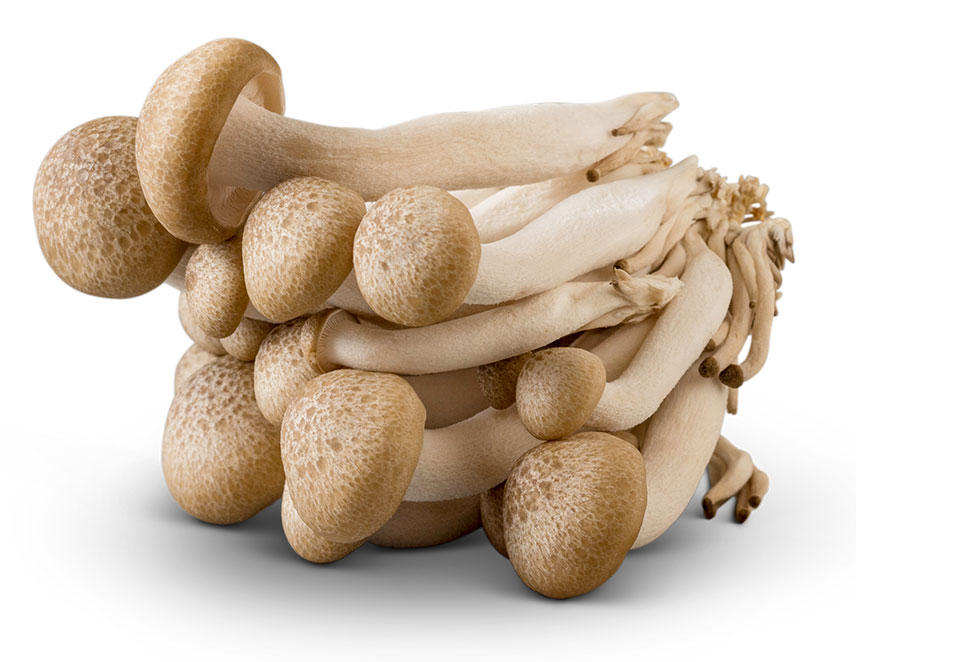

The Benefits
of Beech Mushrooms
Mushrooms remain an excellent resource for controlling calorie intakes while adding nutrients to any diet. They also contain vitamins and minerals that may support a healthy lifestyle.
Beech Mushroom Nutritional Profile
While they might be low in calories and fat-free, beech mushrooms contain valuable nutrients that make them a healthy addition to any meal.
- 40 Calories
- 7 Grams of Carbohydrates
- 2 Grams of Protein
- 3 Grams of Dietary Fiber
- 0.5 Grams of Fat
- 0% DV of Sodium
- 0 Gram of Sugar
- Gluten-Free
One serving (100 grams) of beech mushrooms is a good source of thiamine (134%), riboflavin (160%) and niacin (26%).

Culinary
Applications
Chefs and foodies enjoy incorporating these unique and flavorful mushrooms into recipes. Beech mushrooms can be sautéed, stewed, or roasted. They complement seafood, wild game, beef, and poultry well.
Here are some exciting and delicious ways to include beech mushrooms in your favorite meals:
- Stir-fried in an Asian-inspired meal
- Sautéed and served in an omelet
- Simmered in a miso broth for soup
- Battered and deep fried
- Cooked into rich risotto
- Served over pork chops, steak or wild game
Although they can be enjoyed raw in salads, the flavor can easily become too overpowering, which is why it’s recommended to enjoy them cooked.


